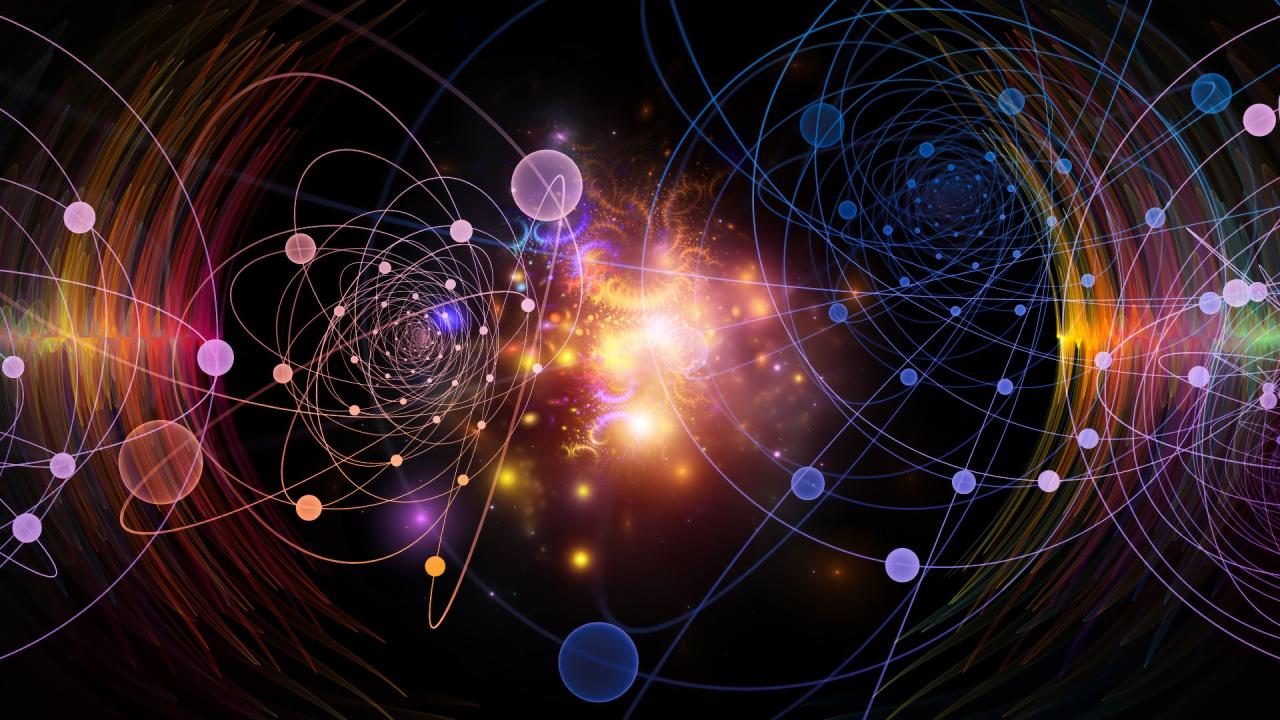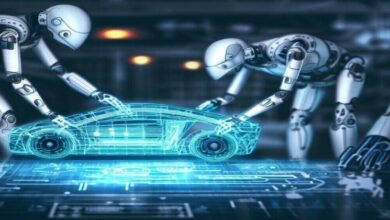Quantum Innovation Changes Everything


A technological revolution is quietly unfolding that promises to redefine the very fabric of our existence. While artificial intelligence and cloud computing dominate today’s headlines, a more fundamental transformation is occurring at the subatomic level. Quantum innovation, leveraging the bizarre yet powerful principles of quantum mechanics, is poised to change everything—from how we discover medicines to how we secure our digital lives. This isn’t merely an incremental improvement on existing technology; it’s a paradigm shift that will reshape industries, redefine possibilities, and solve problems previously considered unsolvable. This comprehensive exploration delves into the world of quantum technology, examining its core principles, its groundbreaking applications, and the profound implications it holds for our collective future.
A. The Quantum Leap: Understanding the Fundamentals
To appreciate why quantum innovation is so transformative, one must first grasp the basic principles that distinguish it from classical physics and computing. The quantum world operates under a different set of rules—rules that seem counterintuitive but hold immense computational power.
A. From Bits to Qubits: The Core Unit of Change: Classical computers, which power everything from smartphones to supercomputers, process information in binary bits. A bit is always in one of two definite states: 0 or 1, like a simple light switch that is either on or off. Quantum computing, however, uses quantum bits, or qubits. A qubit can exist as a 0, a 1, or, most importantly, as a superposition of both 0 and 1 simultaneously. Imagine a sphere where the north pole is 0, the south pole is 1, and a qubit can be at any point on that sphere. This is akin to a spinning coin that is both heads and tails at the same time until it is observed and collapses into one state.
B. Entanglement: The “Spooky” Connection: Another cornerstone of quantum mechanics is entanglement. This is a phenomenon where two or more qubits become inextricably linked, regardless of the physical distance separating them. Measuring the state of one entangled qubit instantly reveals the state of the other, a connection Albert Einstein famously called “spooky action at a distance.” This allows qubits to interact in ways that classical bits cannot, creating a deeply interconnected computational network.
C. Superposition + Entanglement = Quantum Advantage: The combined power of superposition and entanglement is what gives quantum computers their potential for unparalleled speed. While two classical bits can represent one of four possible combinations (00, 01, 10, 11) at any one time, two qubits in superposition can represent all four combinations simultaneously. As you add more qubits, the processing power grows exponentially. This enables quantum computers to explore a vast number of possibilities in parallel, making them exceptionally well-suited for solving specific, complex classes of problems that would take classical computers millennia to crack.
B. Beyond Computing: The Expansive Quantum Ecosystem
While quantum computing often steals the spotlight, the quantum revolution extends far beyond processors. It encompasses a suite of technologies that will fundamentally alter sensing, communication, and simulation.
A. Quantum Sensing and Metrology: Quantum sensors exploit quantum superposition and entanglement to measure the physical world with unprecedented precision. These devices can detect infinitesimal changes in magnetic fields, gravity, time, and rotation.
-
Medical Diagnostics: Quantum sensors could lead to portable, ultra-sensitive MRI machines that map neural activity in real-time or detect neurological diseases like Alzheimer’s much earlier than current technologies allow.
-
Navigation and Geophysics: Quantum accelerometers and gyroscopes could provide precise navigation without relying on GPS signals, revolutionizing transportation and exploration. They could also be used to map underground resources or predict volcanic activity by detecting subtle gravitational shifts.
-
Infrastructure Monitoring: Networks of quantum sensors could detect microscopic stresses and strains in bridges, tunnels, and pipelines, enabling predictive maintenance and preventing catastrophic failures.
B. Quantum Cryptography and The Quantum Internet: The same power that makes quantum computers a threat to current encryption also provides the basis for a new, unhackable form of secure communication.
-
Quantum Key Distribution (QKD): QKD uses the principles of quantum mechanics to securely share encryption keys. Any attempt to eavesdrop on a quantum communication inevitably disturbs the qubits, alerting the sender and receiver to the presence of an intruder. This guarantees the security of the communication channel.
-
The Quantum Internet: The long-term vision is a “quantum internet”—a network that connects quantum computers, sensors, and other devices. This would not be a faster version of today’s internet but a fundamentally new infrastructure enabling applications like secure voting, clock synchronization for financial markets, and distributed quantum computing.
C. Quantum Simulation: One of the most immediate applications of quantum computers is to simulate other quantum systems. This is an area where classical computers struggle profoundly.
-
Drug Discovery and Materials Science: Quantum computers can accurately model the behavior of molecules and atoms, dramatically accelerating the design of new pharmaceuticals, fertilizers, and materials. Researchers could discover a new high-temperature superconductor or a more efficient catalyst for carbon capture, with monumental implications for energy and the environment.
C. Industry Transformations: The Quantum Impact
The practical applications of quantum technology will ripple across every major sector, disrupting established practices and creating new frontiers for innovation.
A. Pharmaceuticals and Healthcare: The drug discovery process is notoriously slow and expensive, often taking over a decade and billions of dollars. Quantum computing can revolutionize this pipeline.
-
Molecular Modeling: Quantum computers can simulate how a potential drug molecule will interact with a target protein in the human body with high accuracy. This allows researchers to screen millions of compounds in silico (via computer simulation), identifying the most promising candidates for laboratory testing and clinical trials, thereby saving vast amounts of time and money.
-
Personalized Medicine: By analyzing a patient’s unique genetic and molecular profile, quantum-powered simulations could help design personalized treatment plans and drugs tailored to an individual’s specific biology, maximizing efficacy and minimizing side effects.
B. Finance and Economics: The financial industry, built on complex models and risk assessments, stands to be profoundly transformed by quantum power.
-
Portfolio Optimization: Investors constantly seek to maximize returns while minimizing risk. This involves analyzing a dizzying number of variables and potential scenarios—a perfect “combinatorial optimization” problem for quantum algorithms to solve, leading to more robust and profitable investment strategies.
-
Fraud Detection and Risk Analysis: Quantum machine learning can analyze massive, complex datasets to identify subtle, sophisticated patterns of fraudulent activity that would evade classical detection systems. Similarly, they can create more accurate models for credit risk and market volatility.
C. Logistics and Supply Chain Management: Global supply chains are incredibly complex networks. Quantum computing can optimize them for efficiency and resilience.
-
Route Optimization: The “traveling salesman problem”—finding the most efficient route between multiple cities—is a classic challenge in logistics. For a global shipping company with thousands of destinations, the number of possible routes is astronomical. Quantum algorithms are uniquely suited to find the absolute most efficient path, saving fuel, time, and reducing environmental impact.
-
Inventory Management: Quantum systems can optimize inventory levels across a global network, ensuring products are in the right place at the right time while minimizing capital tied up in unused stock, a key factor in sustainability and profitability.

D. Navigating the Quantum Future: Challenges and Implications
The quantum future is not without its hurdles and profound societal questions. The path to widespread quantum adoption is complex and requires careful navigation.
A. The Technical Hurdles: Building a practical, large-scale quantum computer is one of the greatest engineering challenges of our time.
-
Qubit Stability and Decoherence: Qubits are extremely fragile. Their delicate quantum state can be easily destroyed by the slightest interference from the external environment—a phenomenon known as decoherence. Maintaining qubit stability for long enough to perform meaningful calculations requires complex error-correction codes and operating at temperatures near absolute zero.
-
Scalability: While companies like IBM, Google, and Honeywell are increasing qubit counts, simply adding more qubits isn’t enough. The challenge is to increase the number of high-quality, “logical” qubits (which are error-corrected) while maintaining low error rates and high connectivity between them.
B. The Cybersecurity Threat (Y2Q): A sufficiently powerful quantum computer will be able to break the public-key cryptography that secures almost all of our digital communications today, from online banking and email to government secrets. This looming threat, known as “Y2Q” (Years to Quantum), has spurred a global race to develop and deploy post-quantum cryptography—new encryption algorithms that are secure against both classical and quantum attacks.
C. The Societal and Ethical Landscape: As with any powerful technology, quantum innovation raises important questions.
-
The Access Gap: Will quantum technology become a tool for global progress, or will it create a new “quantum divide” between nations and corporations that possess this power and those that do not?
-
Job Displacement and Creation: While quantum technology will create entirely new fields and job categories, it will also disrupt existing ones. Preparing the workforce for this transition through education and reskilling is crucial.
-
Dual-Use Dilemmas: The same power that can design new medicines could also be used to design new chemical weapons. The potential for dual-use requires robust ethical frameworks and international cooperation to ensure quantum technology is used for the benefit of humanity.
Conclusion: Embracing the Inevitable Shift
Quantum innovation is not a distant, speculative dream. It is an ongoing technological shift that is already beginning to change everything. From unraveling the mysteries of nature to securing our digital future and solving intractable global challenges, its potential is boundless. The transition will be complex, demanding significant investment in research, a focus on building a quantum-ready workforce, and the development of thoughtful governance. However, by understanding its principles, preparing for its implications, and steering its development with wisdom, we can harness the power of the quantum realm to build a healthier, more secure, and profoundly more advanced future for all. The quantum age is dawning, and it promises to be the most transformative chapter in human technological history.
Tags: quantum computing, quantum innovation, qubits, quantum mechanics, quantum cryptography, quantum sensing, drug discovery, post-quantum cryptography, technology future, quantum applications, quantum supremacy, tech disruption




